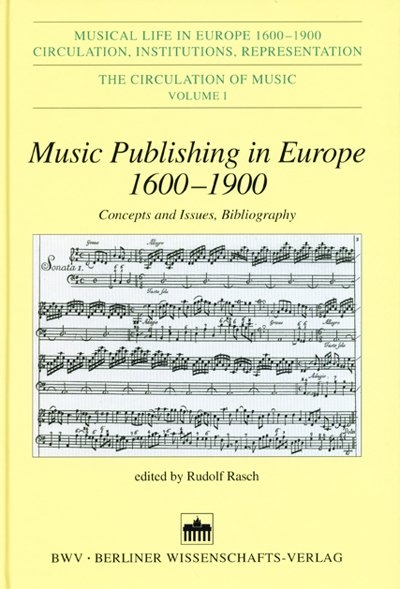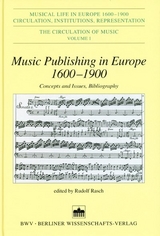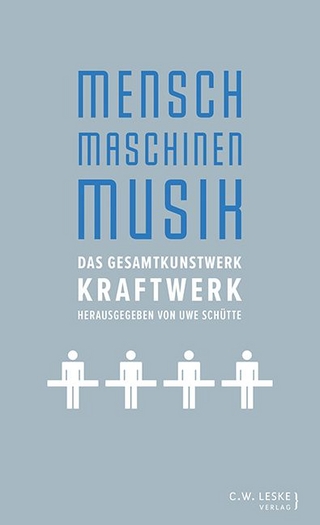Music Publishing in Europe 1600-1900
Berliner Wissenschafts-Verlag
978-3-8305-0390-3 (ISBN)
- Titel leider nicht mehr lieferbar
- Artikel merken
From the contents:
Chapter 1: Basic Concepts: Rudolf Rasch - Publishers Publications Features
Chapter 2: Historical Sources: Anik Devriès-Lesure - Printed Sources Manuscript Sources Other Sources
Chapter 3: Technological Aspects: Anik Devriès-Lesure - Copying by Hand Printing from Movable Type Printing from Engraves Plates Lithography and Related Methods
Chapter 4: Economic Aspects: The Artaria Case: Rupert Ridgewell - Beginnings Infrastructure The Inventories Using the Inventories
Chapter 5: Legal Aspects: Laurent Guillo - Publishers and the Authorities Publishers and Authors Privileges Authors Rights Copyright Laws and Xopyright Collecting Societies
Chapter 6: What do Surviving Copies of Early Printed Music Tell Us? : David Wyn Jones - What Kind of Music Was Published? Parts and Scores Title Pages Music Publishing and the History of Music
Chapter 7: Composers and Publishers: Germany 1700-1830: Axel Beer - Preliminary Remarks The Period to c. 1750 The Second Half of the Eighteenth Century From the Turn of the Century until c. 1830
Chapter 8: Publishers and Publishers: Rudolf Rasch - Friendly Relationships Hostile Relationships
Chapter 9: Publishers and Buyers: Bianca Maria Antolini - Sales Outlets Subscription Systems Publicity Buyers
| Erscheint lt. Verlag | 4.2.2005 |
|---|---|
| Reihe/Serie | Musical Life in Europe 1600-1900 Circulation Institutions Representation |
| Sprache | englisch; französisch; deutsch |
| Maße | 153 x 227 mm |
| Gewicht | 560 g |
| Einbandart | gebunden |
| Themenwelt | Kunst / Musik / Theater ► Musik ► Musikgeschichte |
| Geisteswissenschaften ► Geschichte | |
| Schlagworte | 1600-1900 • Europa, Musik • Hardcover, Softcover / Musik/Musikgeschichte • HC/Musik/Musikgeschichte • Musikgeschichte • Musikverlag • Notendruck |
| ISBN-10 | 3-8305-0390-3 / 3830503903 |
| ISBN-13 | 978-3-8305-0390-3 / 9783830503903 |
| Zustand | Neuware |
| Haben Sie eine Frage zum Produkt? |
aus dem Bereich




